Here is teardown of another cheap USB charger bought some time ago for around two euros from some chinese online shop. Brand “Designed by Able” Model 1300.
Label
Circuit board
Closeup of circuit board
One finding is that rectifier is replaced with diode, meaning that this half-wave rectifies mains power.
Other findings:
- The switcher circuit is based on two transistors (SW 13003 and UTC S8030) and optiosolator feedback
- There does not seem to be any fuse (or fusible resistor or other protection component) anywhere, the mains power is directly rectified with 1N4007 diode to main capactor
- The insulation distances between promary and secondary on the circuit board are quite small: shortest distance around 3 mm from solder to solder and slightly over 2 mm track-to-track
I don’t don’t thinks this is safe or good quality power supply. It might not be immediately dangerous, but the safely level is very low -I quess that this might not get though all the electrical safety regulations if gets tested by regulators.
If you need USB power supply, get something safer.
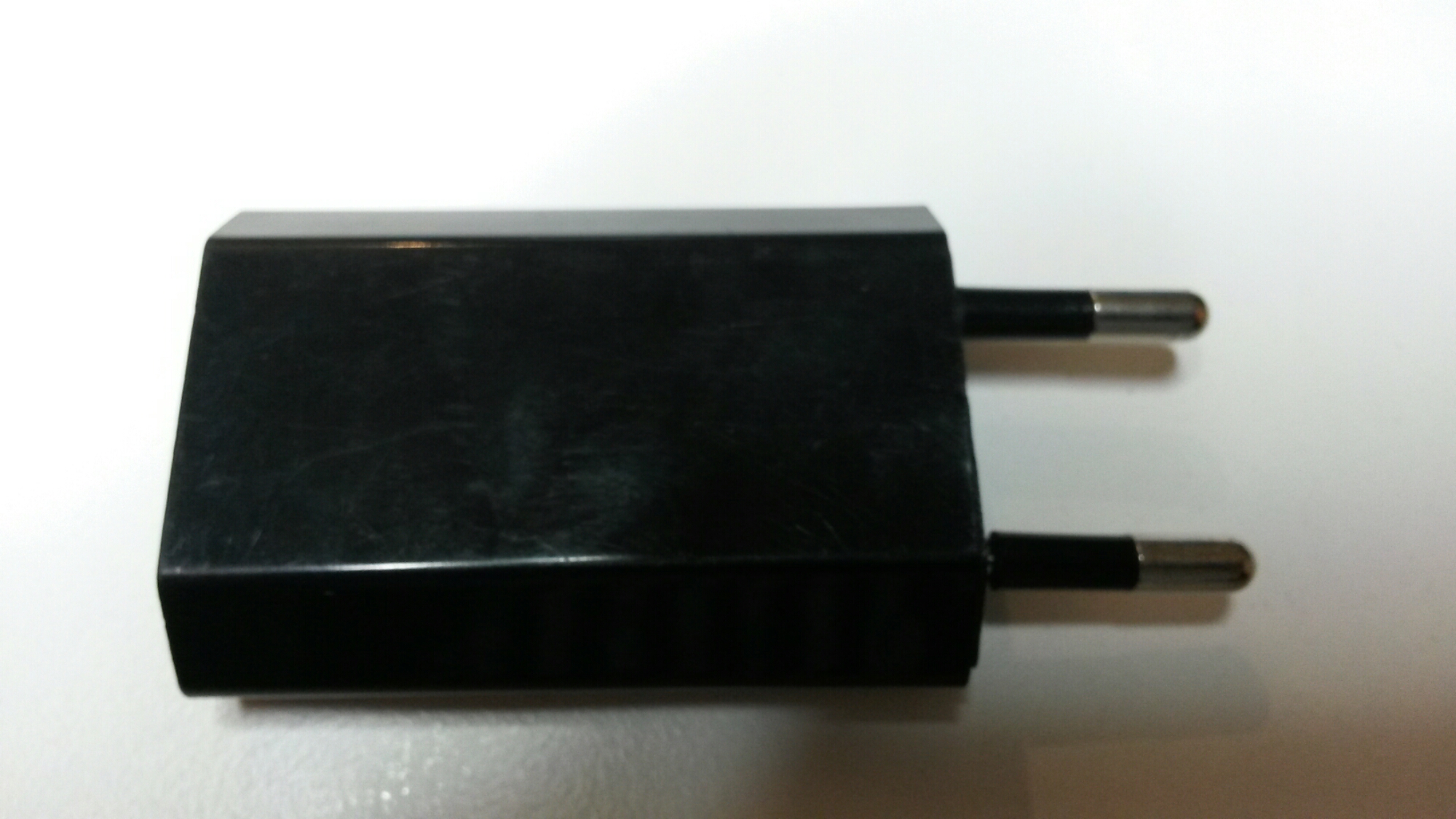
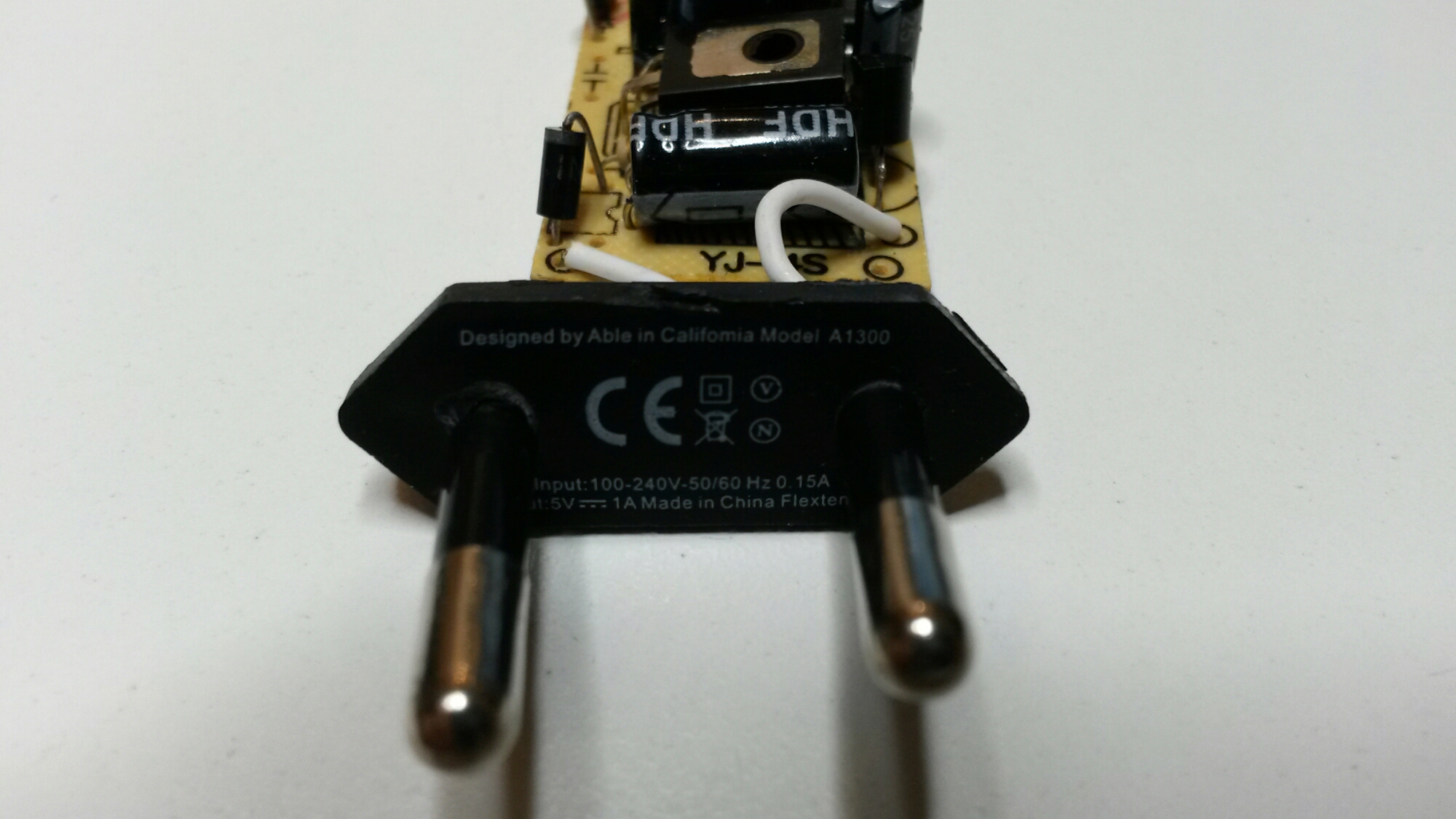
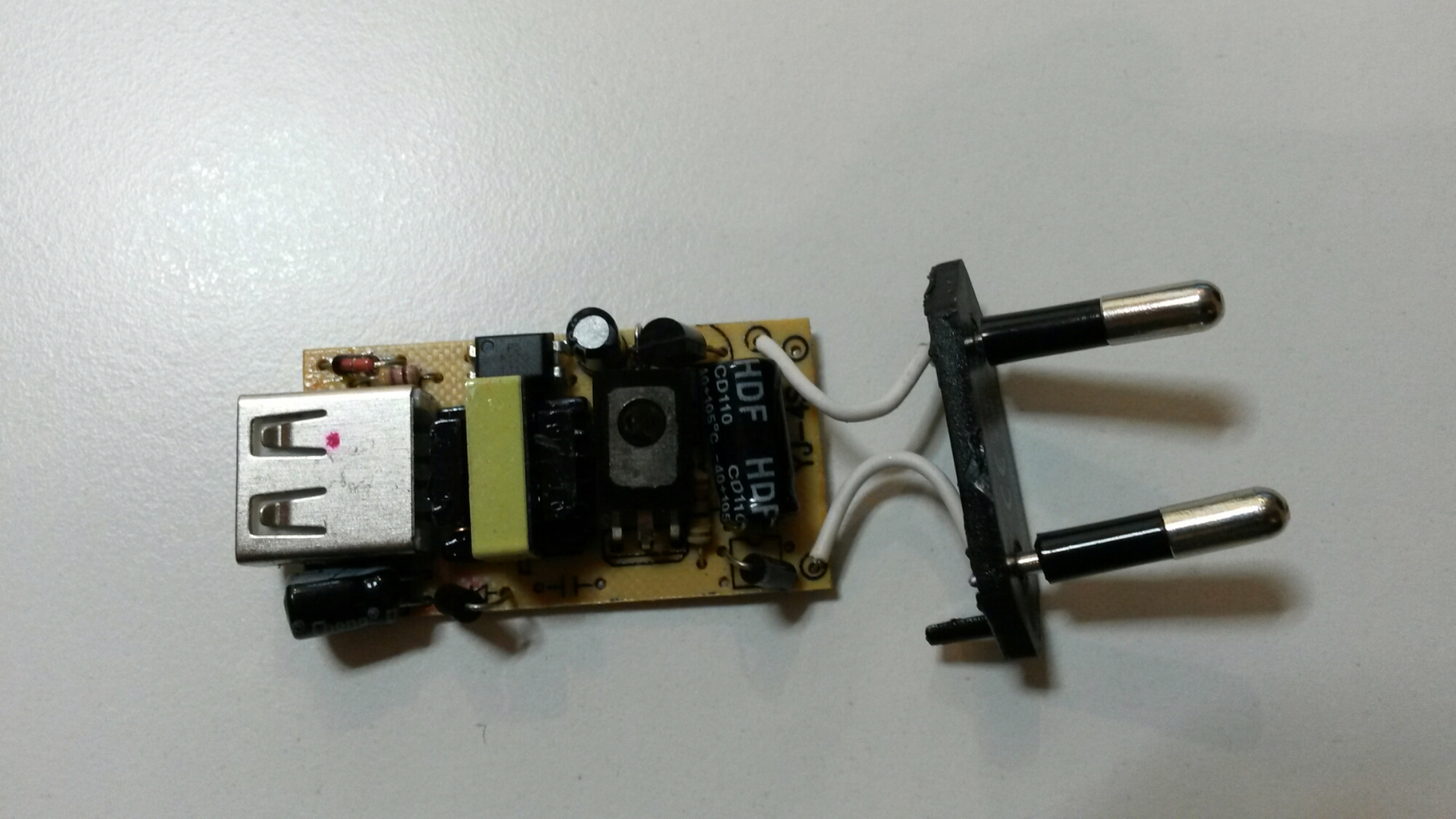
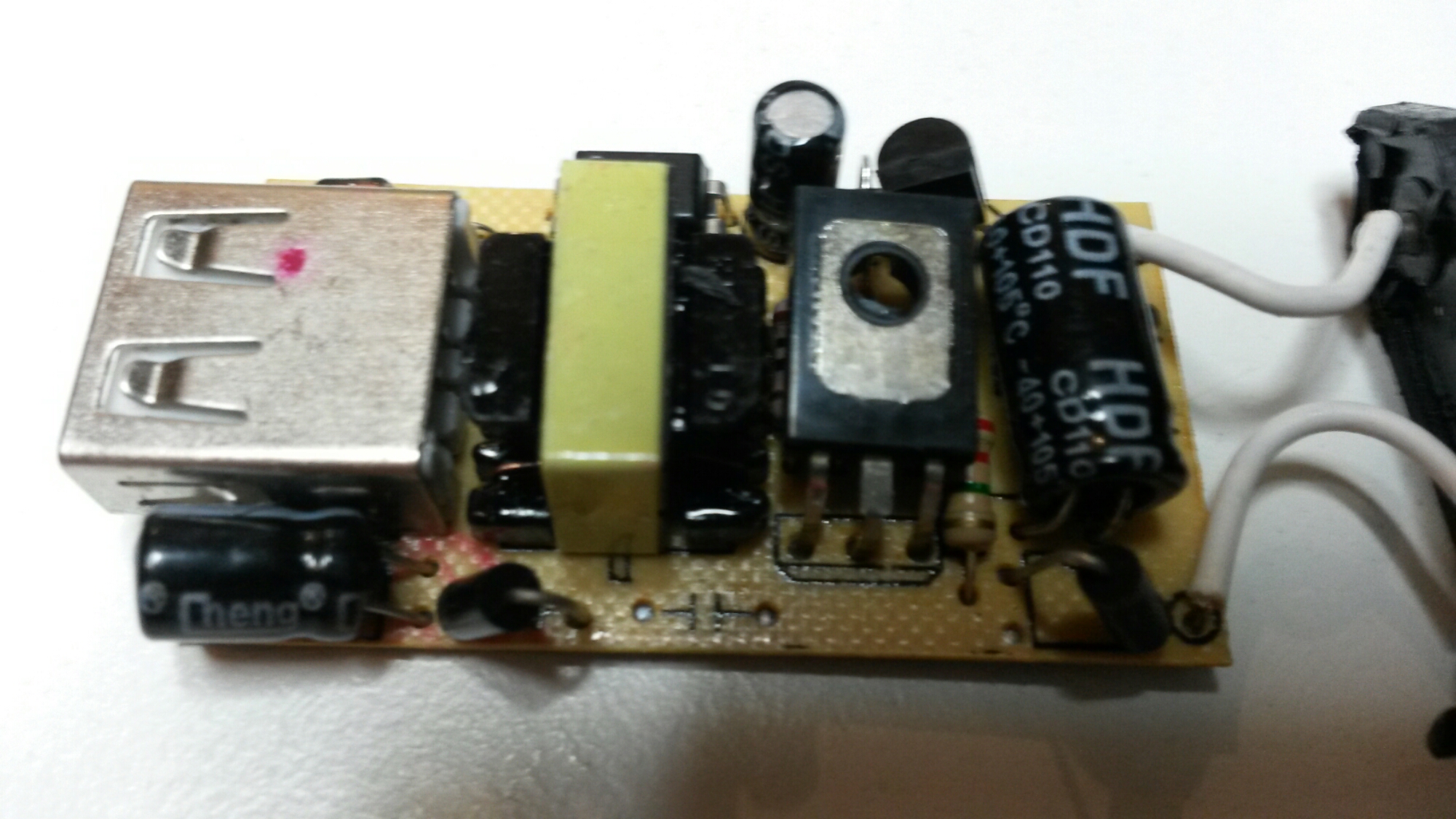
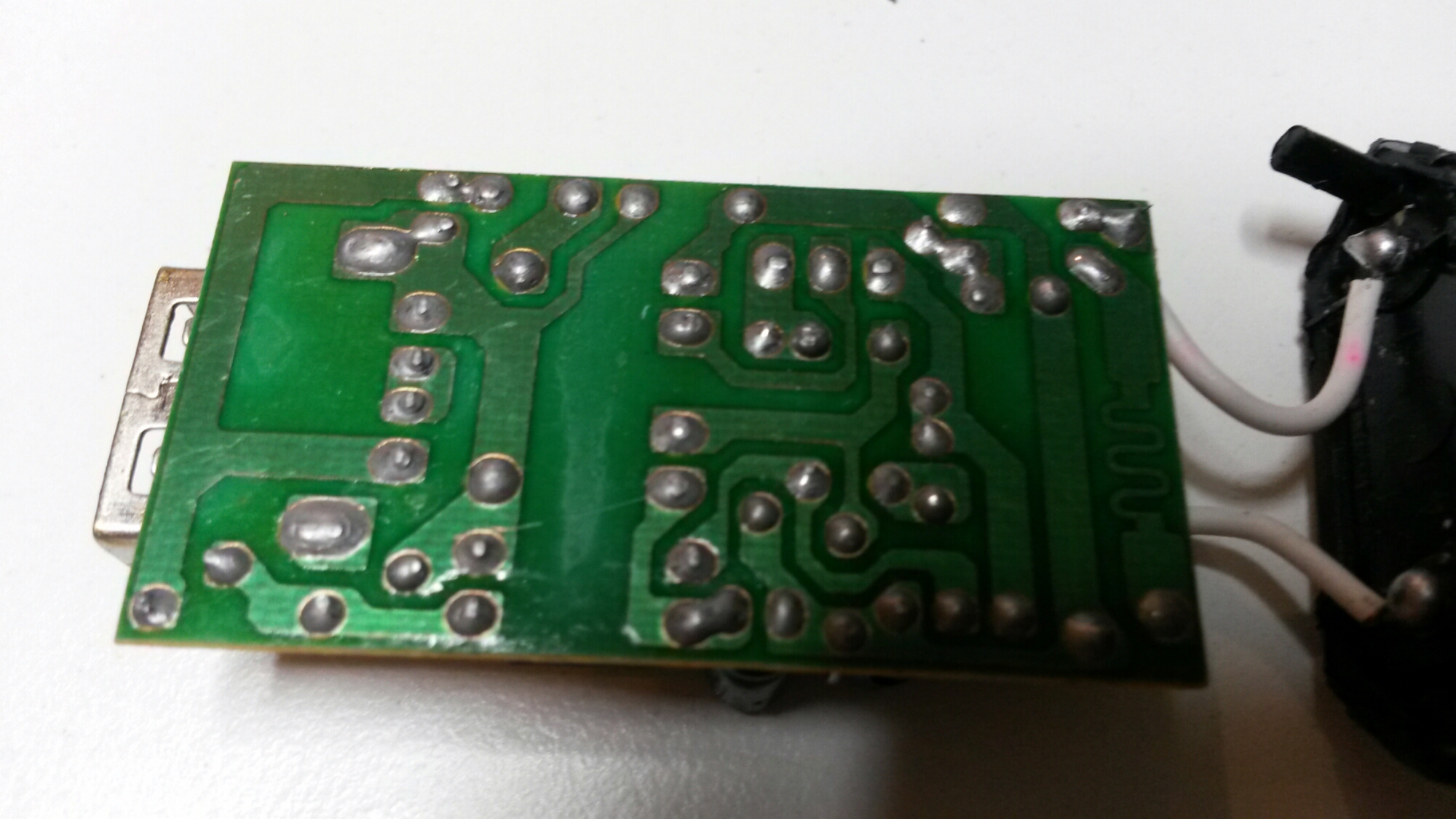
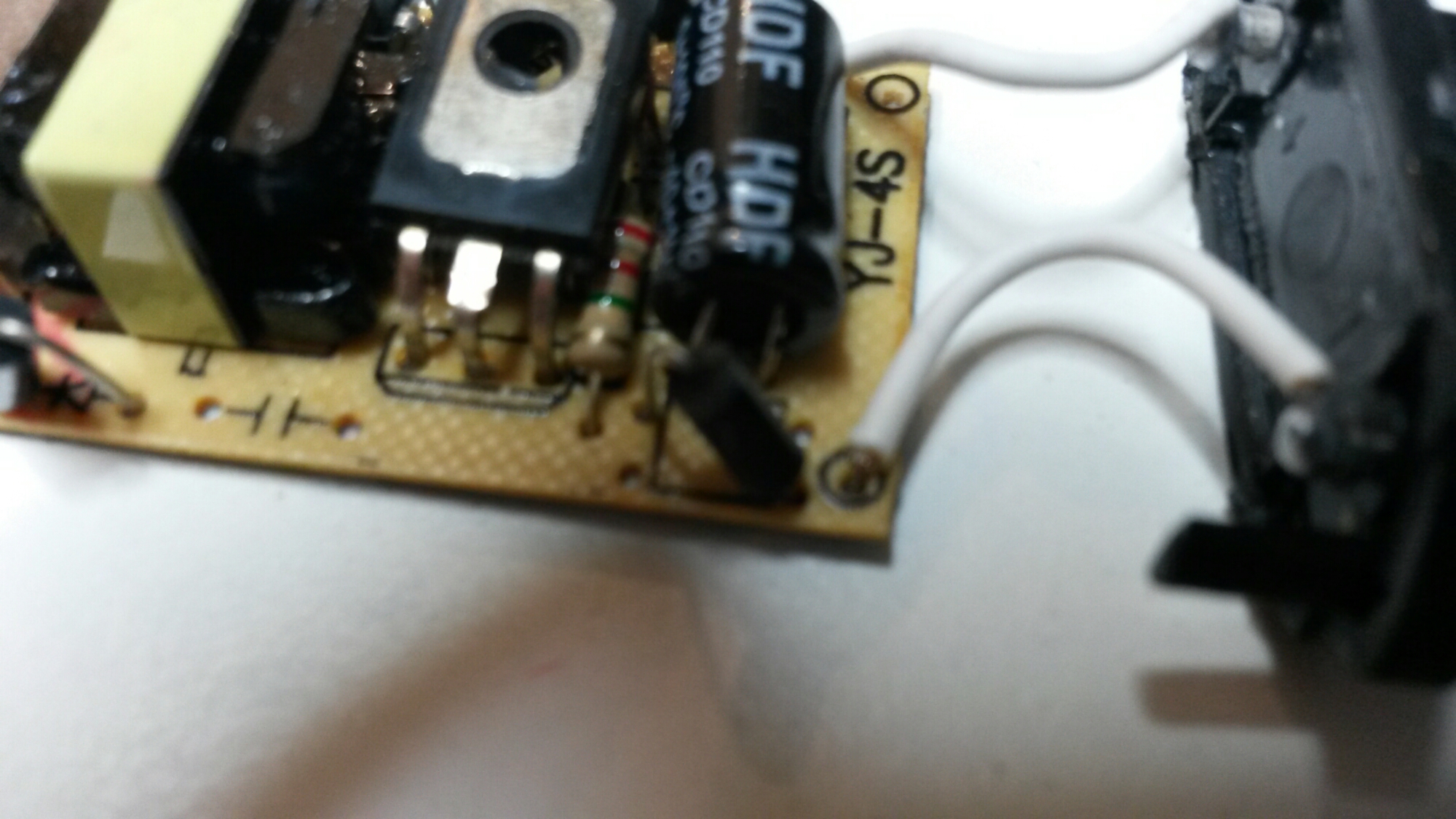
64 Comments
Tomi Engdahl says:
Tähän aiheeseen löyhästi liittyen: katsokaa juutuubista riemastuttavan tsekin “DiodeGoneWild”in videoita aiheesta vaaralliset USB-laturit. Hän on bongaillut noita Y-konkkia monen näköisiä, yleensä siellä on tavallinen muutaman nanon, kilovoltin konkka, joka ei täytä minkään valtakunnan (venäjän ehkä) turvamääräyksiä.
Tomi Engdahl says:
Dangerous USB phone chargers 15
https://www.youtube.com/watch?v=11viSmS9WWc
A pair of small 5V 1A USB chargers, what’s inside, checking the safety, interference and quality. The first one was a part of handheld oscilloscope accessories, the second one is from eBay. Let’s see what surprises are hidden inside of them. Some chargers may not comply with safety regulations, cause an electric shock or fire. Their current rating may be fake, the output voltage may be wrong and they can cause electromagnetic interference (EMI) or damage your USB devices.
Tomi Engdahl says:
Usb-laturissa piilee karmea yllätys: Sähköiskun vaara, vaikka olisi irti seinästä – ”Mitattiin 168 V jännite” https://www.is.fi/digitoday/art-2000009504873.html
Tomi Engdahl says:
IKEA SMÅHAGEL USB charger teardown
https://www.youtube.com/watch?v=G0yrCSD3FAM
Thanks to John for sending me some of the new updated versions of the Koppla charger. Since reviewing that one six years ago I’ve had one plugged in 24/7 for charging all my USB items, and it has performed flawlessly.
The supply voltage range has been widened to 100V – 240V and the output remains the same at 3.4A total at 5V with a maximum of 2.4A per socket. This charger doesn’t offer higher voltage express charging, which is good news for your phone’s battery.
I desoldered the mystery capacitor between the main MOSFET’s gate and drain, and it measured around 22pF, which makes more sense.
Tomi Engdahl says:
Poista nämä kaksi laturia heti käytöstä – viranomaiselta vakava varoitus
Laturien käyttö altistaa sähköiskulle ja toisessa tapauksessa myös tulipalolle.
https://www.is.fi/digitoday/art-2000009604219.html
Tomi Engdahl says:
IKEA mini Smahagel teardown
https://www.youtube.com/watch?v=lOJbxhA0E3E
I opened this unit expecting it to be well built, and it didn’t disappoint. It even threw in a few surprises.
This is IKEA’s smallest USB power supply intended for continuous use to power accessories like lights or ornaments. It only delivers 5V at 1A, so is less suited to high demand items like smartphones and tablets. But it will happily charge and power smaller items.
I’ve always recommended the use of good quality branded USB power supplies for safety reasons. I regard IKEA power supplies as some of the most robust and safest units available. And they’re NOT expensive compared to the fashion brands.
Tomi Engdahl says:
Wyness? Why not? WHY?
https://www.kg4cyx.net/wyness-why-not-why/?fbclid=IwAR2eXejhPqBg4d3hYbOK_VHOmBidnKOWplKX3eAOA2Hg72B_v22UaPq0Dho
I was cleaning up and found an old Six-Letter usb charger that I remembered having removed from service but I couldn’t remember why. I opened it up and got a clue right away.
The unpopulated spots on the bottom are for the very important AC line noise filter to keep the high frequency switching pulses from the switch mode power supply from escaping into the house wiring and causing a myriad of interference to tv/radio reception and audio systems (among other things). In many cheap and nasty power supplies that have gone through quality fade, you will find this same issue. What should have been there is a common mode choke that looks like a small transformer, and a safety capacitor.
Tomi Engdahl says:
https://circuitckt.blogspot.com/2023/10/5v-800ma-switched-mode-power-supply-circuit.html
Tomi Engdahl says:
Aside from apparently having both the ability to reproduce on their own and simultaneously never being around when you need one, USB chargers seem innocuous enough. The specs are simple: convert mains voltage to 5 volts, and don’t kill anyone while doing it. Both specs are typically met by most designs, but judging by ‘s latest USB charger teardown, the latter only just barely, and with a whole lot of luck….
JUST HOW DODGY ARE CHEAP USB CHARGERS ANYWAY?
https://hackaday.com/2023/11/03/just-how-dodgy-are-cheap-usb-chargers-anyway/?fbclid=IwAR2dtHu9mUJjrqO9ZLwBR12ogPwyFiBU5I58wmtBR1Cp-mKd5phKb6zi3mc
Tomi Engdahl says:
https://avdweb.nl/tech-tips/electronics/mini-power-supply
Tomi Engdahl says:
Tämä laturi voi aiheuttaa sähköiskun – Lopeta käyttö heti
Saksalaisen Cadorabon latauspistokkeesta irtosi pinni, joka voi jäädä kiinni pistorasiaan.
https://www.iltalehti.fi/digiuutiset/a/004c4e22-6198-4544-9b2a-04cade0f80db
Tomi Engdahl says:
Aavistuksen turvaton kiinalainen laturi
https://m.youtube.com/watch?v=IAZFdj6OeyU
Tomi Engdahl says:
I’ve seen boards with inadequate separation between the live side and low voltage side. But the real problem is that the transformer, opto-isolator, and interference suppression capacitor all have the ability to make the low voltage side live, and one really cannot test them. One has to trust that the manufacturer has done their job properly.
Tomi Engdahl says:
you can’t usially anywhere near 100% test those components between the mains side and low voltage side. But often some level of testing can be done and is done during manufacturing (hipot testing). Insulation resistance meters and AC leakage curren testers can be used to sort our if there is a serious problem or not there. To properly use those instruments you need to understand what you are doing – mistakes can lead to wrong results, even equipment damage or danger of electrical shock.